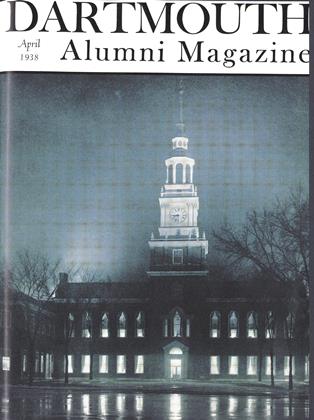by Harold E. Burtt '11. Boston, Houghton Mifflin Cos., 1938. Pp. 473. $3.00.
This volume by Professor Burtt of Ohio State University rounds out the trilogy concerned with psychology and business; Principles of Employment Psychology (1936) and Psychology and Industrial Efficiency (1929) were the previous contributions. Consistent with the sound and thorough treatment accorded to "the selection of employees" and "the conditions of work" in the earlier books, Psychology ofAdvertising advances the present study with like aptitude.
Identifying himself chiefly with the interests of the advertiser, Professor Burtt puts the wealth of his psychological knowledge and acumen at the command of enterprising business executives and business-minded students. He shows how psychological principles can be brought to the service of advertising problems. Subscribing to the policy of manufacturing what the customer wants, the author discusses the increasingly popular consumers' survey among other ways of discovering what the prospect desires. The value of suggestion, the primacy of emotional appeals .and the use of motivation in advertising are strongly emphasized. In gaining attention factors of intensity, contrast, isolation, position, color and pictures are evaluated on the basis of experimental studies. The significance of imagery, memory and association for buying habits is also supported by objective investigations. A highly suggestive chapter on "Radio as an Advertising Medium" is followed by shorter psychological discussions of newspapers, magazines and outdoor advertising. Intelligent consideration as well is given to the psychology of "good will." Throughout the treatment quantitative methods for measuring the strength of appeals are designated. For such researches as well as for those involving changes in attitudes and motives the author predicts a closer relationship of the advertiser and the psychologist.
Since Professor Burtt provides in the course of his treatment an appropriate introduction to psychological topics, no other technical training is essential for the intelligent reader. The author employs tables and figures but uses no illustrations. Most of the chapters end with a convenient summary. An enlivening effect is produced by the author's choice of examples. An amusing instance is that of customers asking for the "pink tooth brush"; some times advertising succeeds conversely. This up-to-date text is in accord with the accepted traditions of applied psychology and serves a genuine need for courses in Psychology of Advertising, and further offers much valuable guidance for the advertiser.
 View Full Issue
View Full Issue
More From This Issue
-
 Article
ArticleIn Search of Snow Down Under
April 1938 By DAVID J. BRADLEY '38 -
 Article
ArticleThe Potentialities of Education
April 1938 By FREDERICK E. WAGNER '38 -
 Article
ArticleThe Undergraduate Chair
April 1938 By BEN AMES WILLIAMS JR. '38 -
 Class Notes
Class NotesClass of 1937
April 1938 By Donald C. McKinlay -
 Class Notes
Class NotesClass of 1910
April 1938 By Hap Hinman -
 Class Notes
Class NotesClass of 1934
April 1938 By Martin J. Dwyer Jr.









